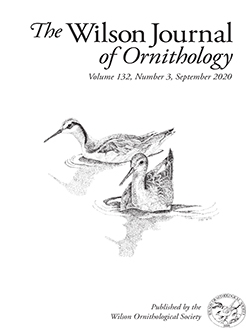Pine plantations comprise about 7% of total world forest cover and are increasing across the globe. We compared settlement times, breeding densities, and the effects of time, habitat, and nest-site characteristics on the nest success of Eastern Wood-Pewees (Contopus virens) in red pine (Pinus resinosa) plantations and deciduous forest stands in south-central Ontario, Canada, in 2007 and 2008. Our goal was to evaluate the quality of these 2 habitats for this declining aerial insectivore. Pine plantations and deciduous forest stands were settled nearly simultaneously and at similar breeding densities, suggesting no preference for either habitat. Nest success in pine plantations (22%) was lower than in deciduous forests (35%), corresponding to higher counts of red squirrels (Tamiasciurus hudsonicus) and Blue Jays (Cyanocitta cristata) in plantations. Daily nest survival was lowest when nestlings were about 5 d old, but improved substantially as nestlings aged, and over the nesting season. In both habitats, increased nest visibility was correlated with decreased nest survival. In pine plantations, nest survival was higher where trees were more dispersed, while in deciduous forests, nests situated farther from tree trunks had higher survival rates. In both habitats, Eastern Wood-Pewees may use outward branches, when available, to detect movement and then evade potential nest predators. Although pine plantations provide breeding habitat for Eastern Wood-Pewees, management that increases hardwood understories and overstories may help to reduce visibility of Eastern Wood-Pewee nests and to reduce the populations of generalist songbird predators.
How to translate text using browser tools
28 April 2021
Eastern Wood-Pewee (Contopus virens) reproductive success in red pine plantations and deciduous forests in Ontario, Canada
C. Myles Falconer,
Erica Nol
ACCESS THE FULL ARTICLE
daily nest survival
eastern hardwoods
nest success
settlement times
territory





